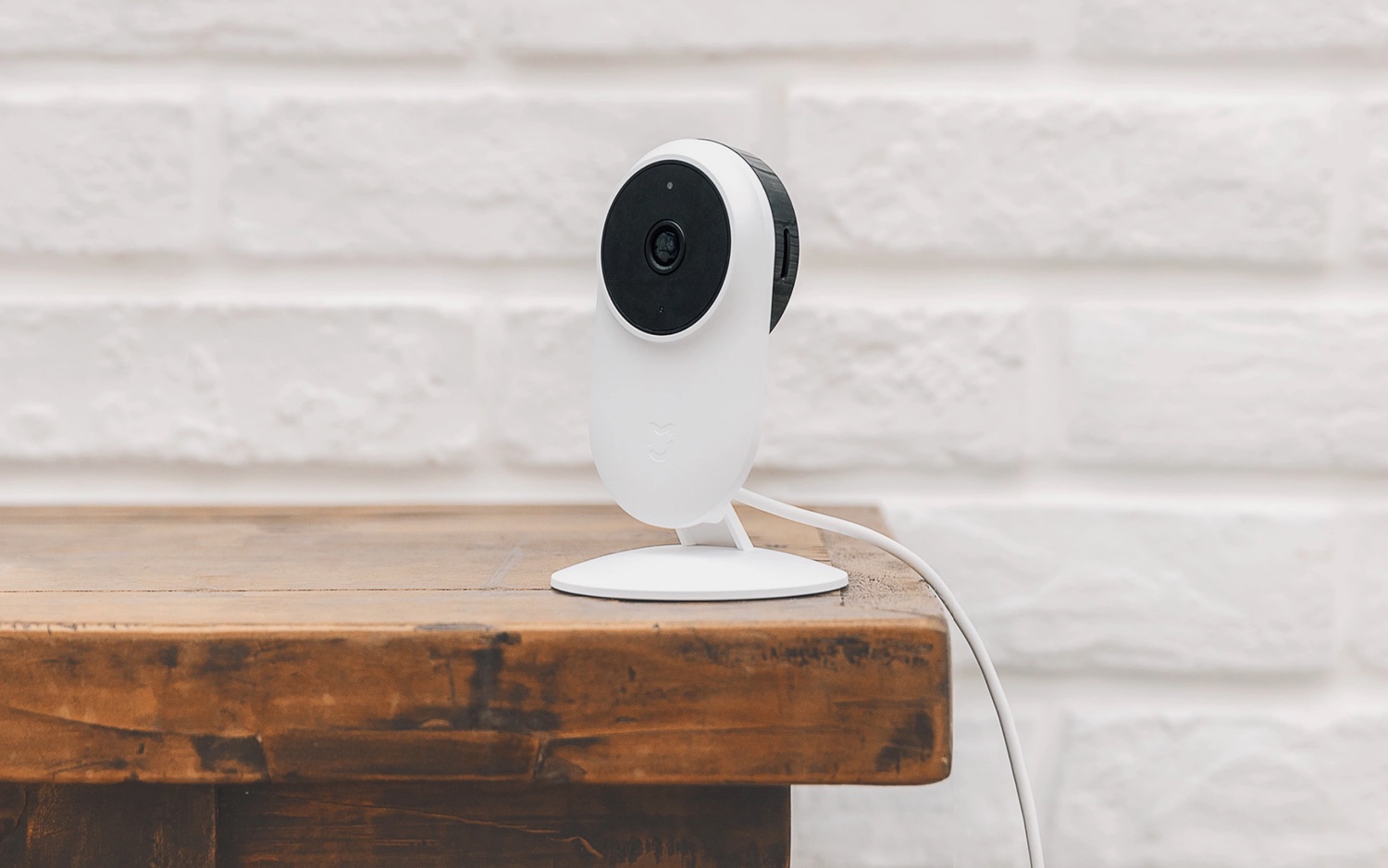Tom's Guide Verdict
The Mi Home Security Camera is inexpensive: only $39.99. Unfortunately, it's no bargain, because Xiaomi cut corners in design, functionality, support and quality.
Pros
- +
Very good daylight video quality — if WDR is enabled
- +
Clear, distinct audio
Cons
- -
Poor night video
- -
Android app requires access to your private data
- -
No cloud storage plan
- -
Uneven feature set, with some key functions very lightweight
Why you can trust Tom's Guide
Even though it costs $39.99, the Mi Home Security Camera is no bargain. While daylight video and audio are generally very good (especially when wide dynamic range is enabled), the camera's feature set is uneven, nighttime video is poor and there's no cloud storage plan. What's more, the Android version of the camera's companion app requires access to your private contacts and calendar, despite the fact that such private data is unrelated to monitoring or controlling the camera.
Design
The lightweight Mi Home Security Camera has a skeletal appearance. That's because the 2.4 x 4-inch oval body is only 0.125 inches deep, except where it thickens to 0.25 inches to surround the 2-inch-round black faceplate. The "works" of the camera are contained in a 2.25-inch black, puck-like disk that's about 0.5 inches thick and attaches to the back. The body pivots 180 degrees in one direction only (forward and back) on a 3.1-inch-round white base. The base has no holes or other means for attaching the camera to a wall.
Surrounding the lens on the faceplate are a status light and eight 940-nanometer infrared lights for night vision. The power cord, which is about 6 feet long, attaches via a mini-USB port on the bottom of the "puck"; its 2 x 1.25 x 1-inch power block obscures an adjacent electrical outlet. The slot for a microSD memory card (not included) is on the side of the "puck," while the speaker is on the back and the microphone is on the bottom. As part of the installation, you have to insert an unbent paperclip into a difficult-to-see reset hole on that's on the opposite side of the puck from the memory card slot.
Video and Audio Quality
The Mi has a 2-megapixel, 1/2.9-inch CMOS sensor that captures 1080p video over a 130-degree field of view through a glass lens. The quality of our test videos was all over the place, from poor to very good, depending on the conditions.
The Mi has an interesting optional setting: the ability to turn its WDR (wide dynamic range) on or off. With WDR off, our test daylight videos were unappealing, with muddy colors. With the feature turned on, videos were improved; the colors were clean and accurate, with appealing brightness and contrast. In both sets of daylight test videos, details — such as a person's face — were generally distinct, though with some pixelation.
Unfortunately, WDR (which works mostly on color) doesn't have any effect on the poor quality of Mi's night vision. While the camera's eight 940-nm infrared lights illuminate objects up to 10 meters away, our test nighttime black-and-white videos had too much contrast, with great loss of detail and significant blur. The only time people's faces were recognizable was when they were looking directly at the camera and were comparatively still.
MORE: Our Favorite Smart Home Gadgets and Systems
Get instant access to breaking news, the hottest reviews, great deals and helpful tips.
Like the Ezviz Mini O 1080p, the Mi boasts full-duplex, two-way audio. The sound from the camera to a mobile device was clear and audible, with just a slight echo. From our test phone to the camera, voices were not quite as loud, but they were clear. While the audio on our recorded test videos was distinct when played on our iPhone, saved MP4 files of the same videos had no audio.
Motion Detection
The Mi's motion-detection tools are a mixed bag. There's a nice depth of functionality for area detection, but very limited scheduling, and sometimes, features required too many taps.
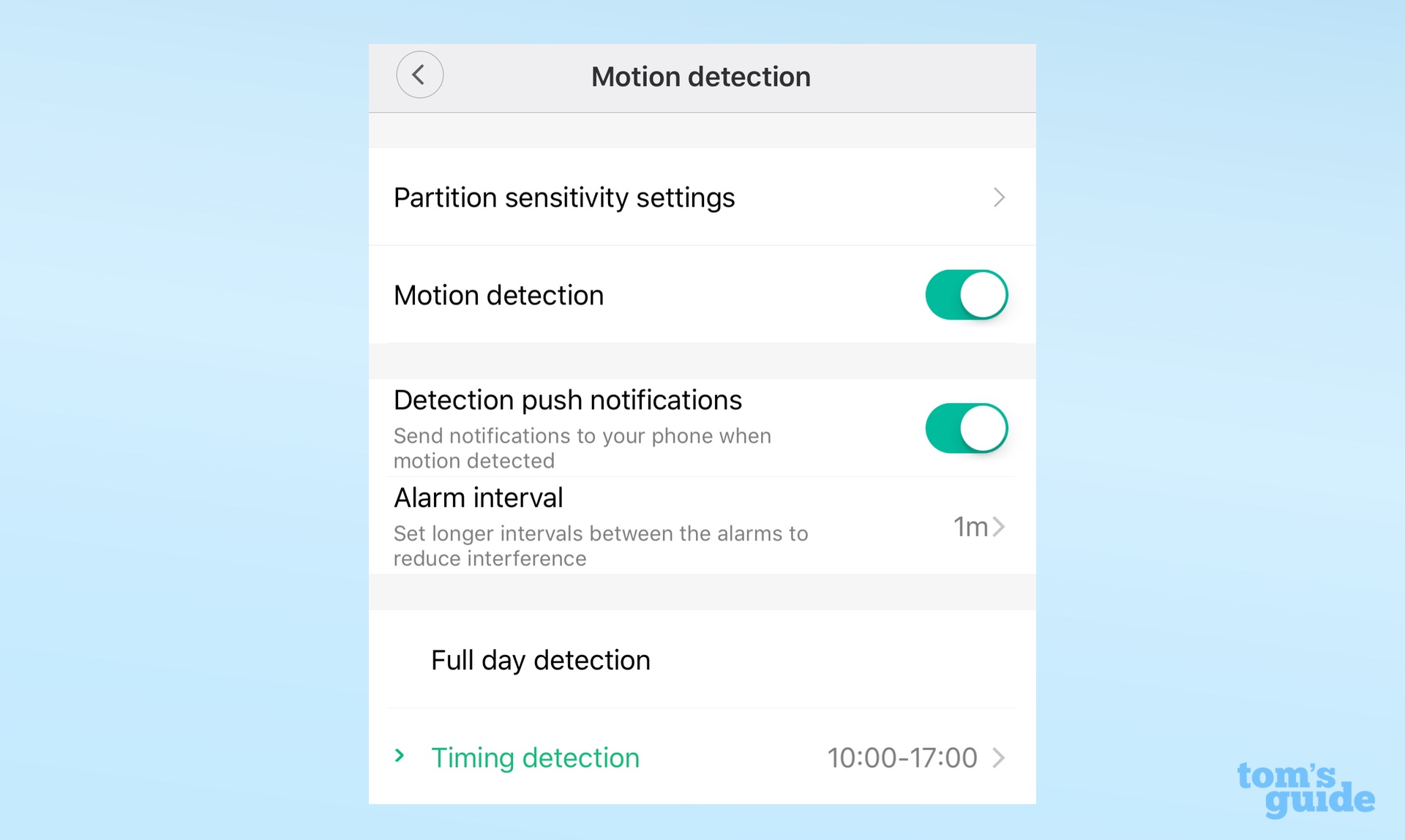
Unlike other cameras' motion-detection-area tools, which will alert you to movement in user-defined areas of the frame, the Mi's Partition Sensitivity grid lets you assign priority settings to each square in the grid: high, medium, low or off. Unfortunately, setting that sensitivity requires too many taps: Rather than allowing the user to draw a larger rectangle and then selecting the level of sensitivity for the entire section, the user has to cycle through the four settings for each square.

Among the other motion-detection settings, you can choose how often you'll receive alarms, from every minute to one every 5, 10 or 30 minutes. It would be better if you could also set a custom value, such as 15 minutes.
MORE: Best Smart Light Switches
The Timer tool (scheduling) allows you to define a single time period that is applied to all days, and that's it. On the other hand, it does respond to Bluetooth geofencing, so that the camera will sleep automatically when you (and your phone) return home.
Cloud Storage
Xiaomi doesn't offer any cloud storage plans in the U.S., either for free or as a subscription. However, the app supports NAS (Network Attached Storage), which means you can choose to have videos saved to your local network or cloud drives.
In addition, the Mi camera supports a microSD card that holds up to 64GB, which you must buy separately.
Playback
The camera's home page has a time line that is awkward to use. You cannot change the time increment, and the timeline has no popup thumbnails. So it is difficult to zero in on a specific event.
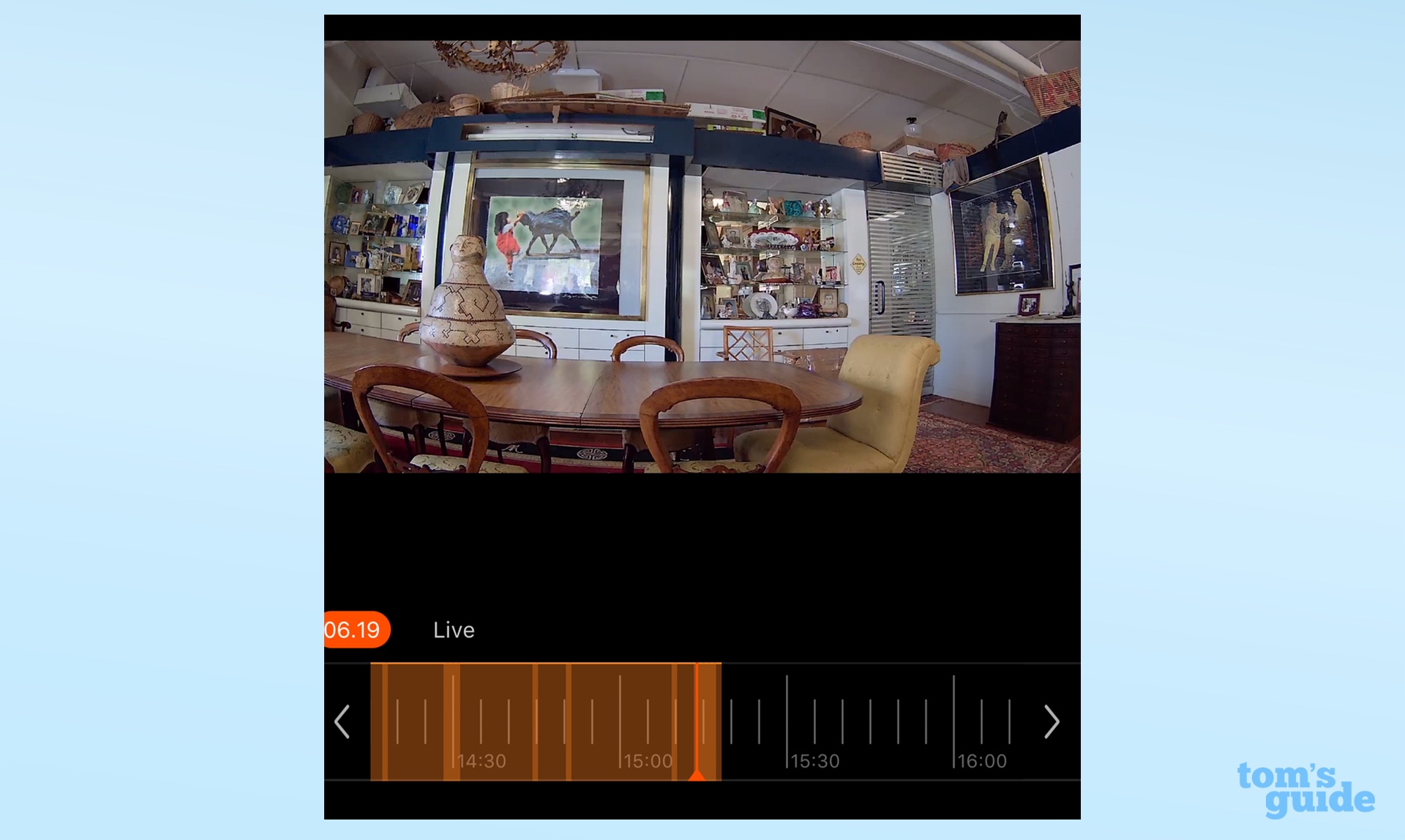
It's much easier to find and play back videos through the Records screen, which displays thumbnails organized by day and time.
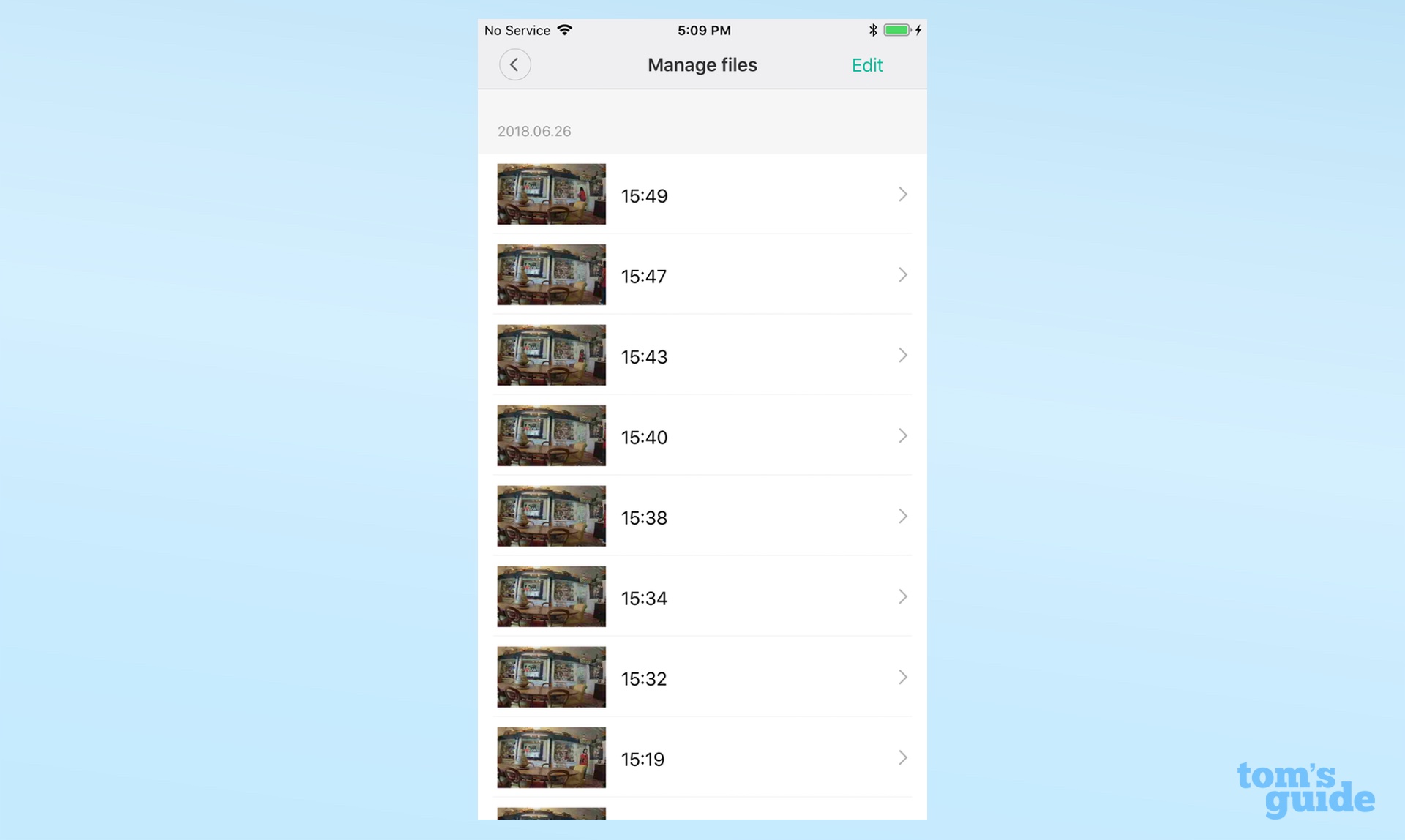

Mobile App
The Xiaomi mobile app is available for Android and iOS. However, to install the app on an Android device, you must give it permission to access all of your phone's data, including your personal contacts and calendar — something the iOS version doesn't require. Given that level of privacy intrusion, we don't recommend using the Android version of the app. The iPhone permissions are less invasive and more appropriate for a security camera. Also, the only password protection for the camera is through the user-defined login of the app.
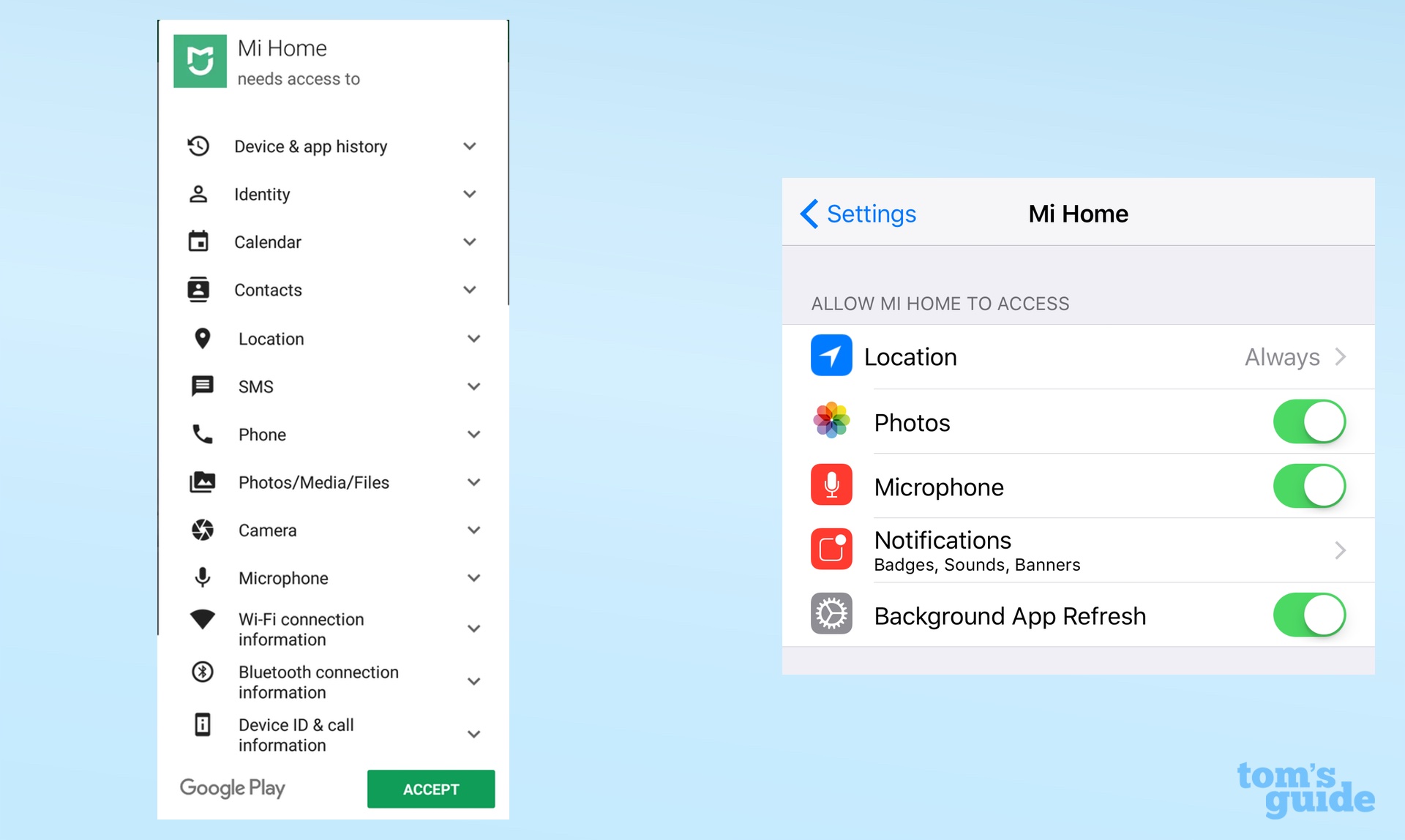
The self-explanatory icons on the camera home screen provide convenient and direct access to key functions, such as Sleep, Talk and Records (for recorded videos).
The app centralizes controls in a single Settings screen, and we liked the depth of some of the features. For instance, you can give family and associates full access to the app and the camera or limit their access to the live feed only.
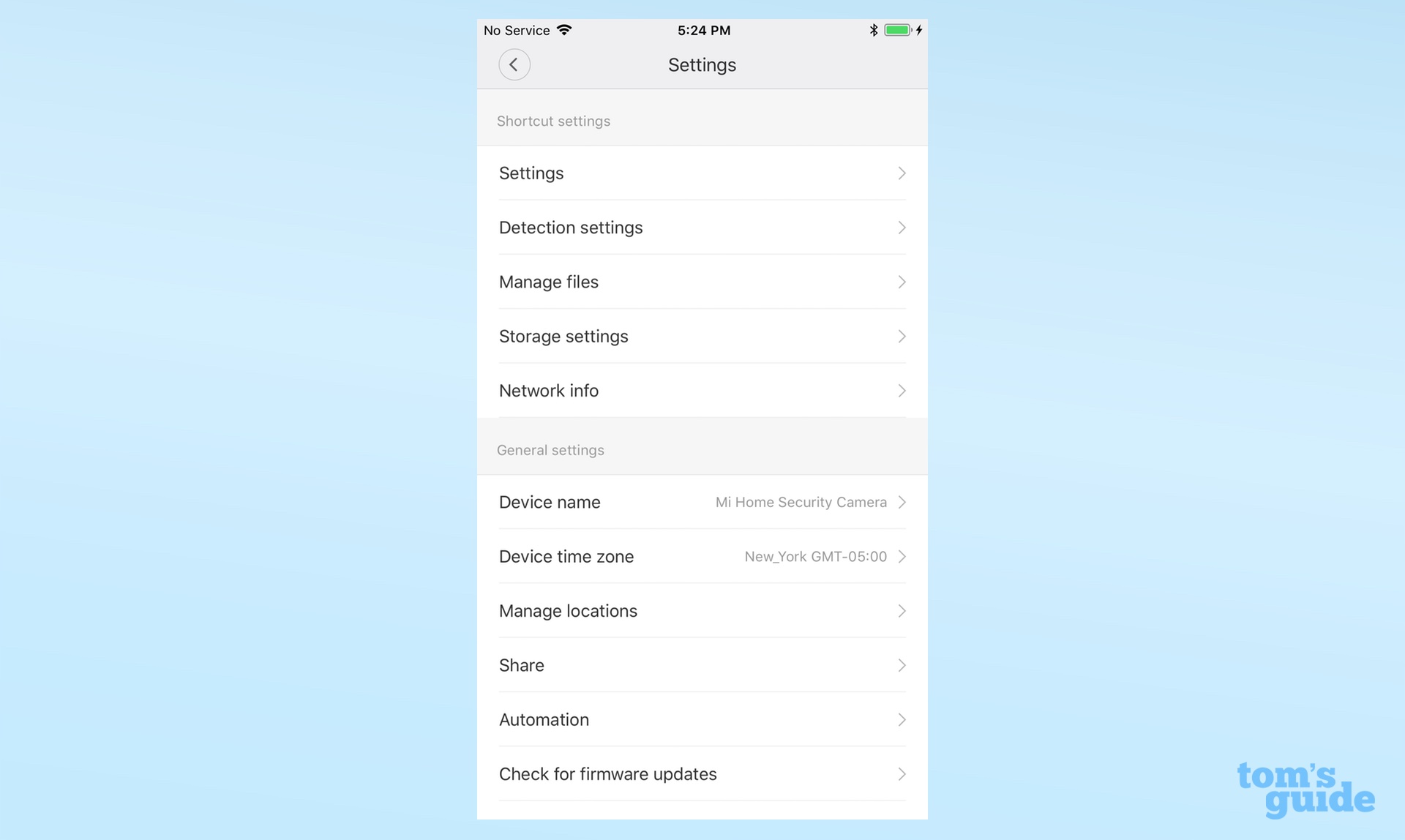
Unfortunately, not all the features settings are intuitive. What's more, while Xiaomi's tech support people were well-versed in very basic issues, they responded with unrelated, rote answers when our questions were more detailed. For instance, a tech support employee said that it was possible to provide different levels of access (full or live view only) when sharing with specific individuals but then couldn't explain how. One tech provided a URL for an online user manual. However, on further investigation, we found that no manual exists for the Mi beyond a tiny QuickStart guide with some camera specifications and instructions to download the app and follow its on-screen installation instructions.
MORE: Apple HomePod vs. Alexa vs. Google Home
The Mi camera supports Amazon Alexa and basic IFTTT automation within the app.
Specs
| Video Resolution | 1080p |
| Field of View | 130 degrees |
| Night Vision | Eight 940-nm infrared lights |
| Network Connectivity | 802.11 b/g/n 2.4 GHz/5GHz |
| Smart Home Connectivity | Amazon Alexa and IFTTT |
| Audio | Full-duplex, two-way audio |
| Mobile Devices Supported | Android 4.0 or iOS 8.0, or better |
| Web Browsers Supported | n/a |
| Cloud Storage & Monitoring | No cloud storage plan. Supports users' Network Access Storage (NAS) |
| Local Storage | MicroSD memory card, up to 64GB (not included) |
| MSRP | $39.99 |
Bottom Line
Though the $39.99 price is tempting, we cannot recommend the Mi Home Security Camera. Its video quality is uneven, it has no cloud plan and some key features are lightweight. What's more, if you use an Android phone, we recommend not downloading the app, which insists on having access to your private data.
If you're looking for a budget security camera, we suggest the Ezviz Mini O 1080p ($59), which is better in every respect than the Mi Camera. And it's also more secure than Xiaomi's camera.
Credit: Tom's Guide

Sally Wiener Grotta is the president and lead analyst of DigitalBenchmarks test lab (www.DigitalBenchmarks.com). The scripts she created for various tech publications for testing and evaluating digital cameras, image quality, software and related technologies have become industry standards. Among her numerous books is the first major volume on image processing “Digital Imaging for Visual Artists” (McGraw-Hill), co-authored with Daniel Grotta. Her hundreds of reviews, stories and columns have appeared in scores of magazines, journals and online publications.
